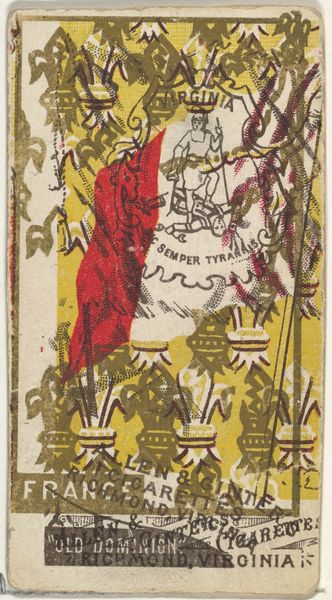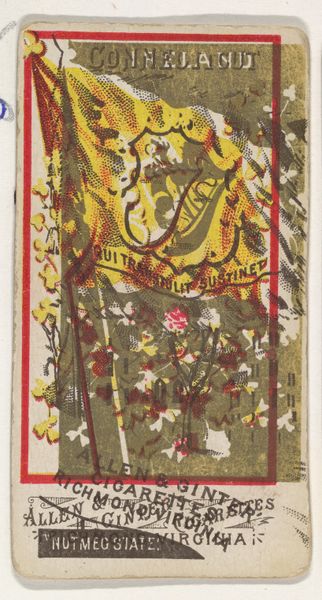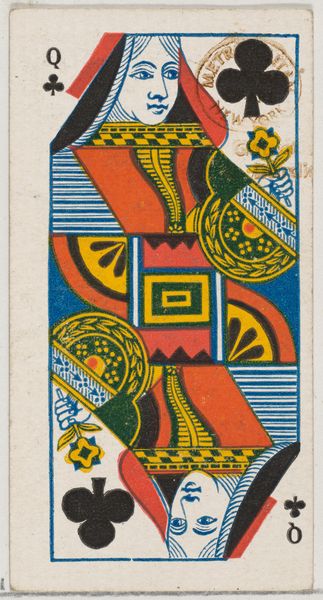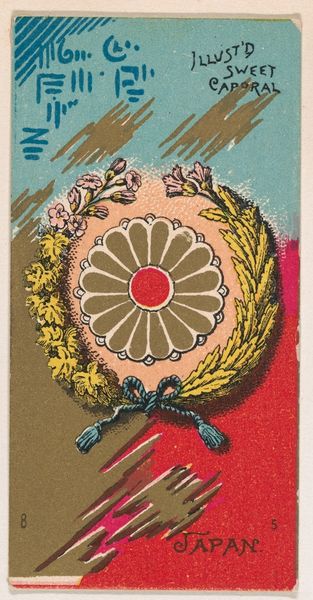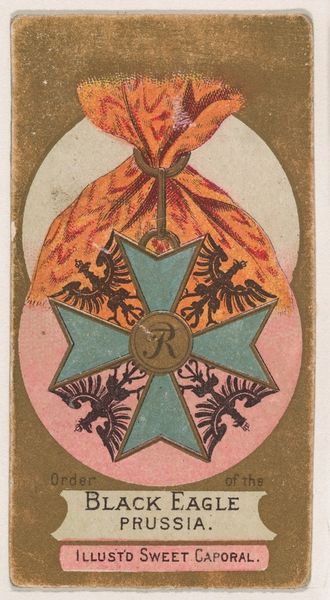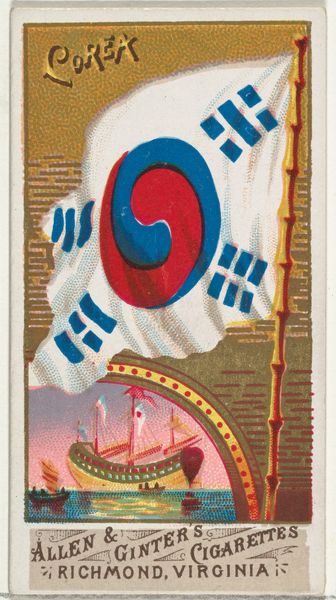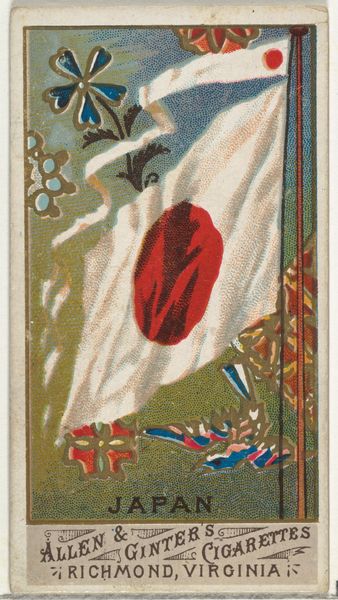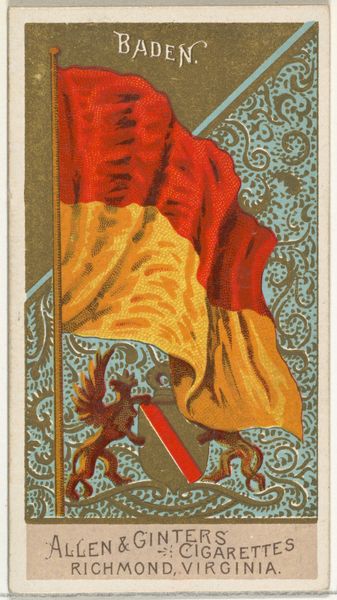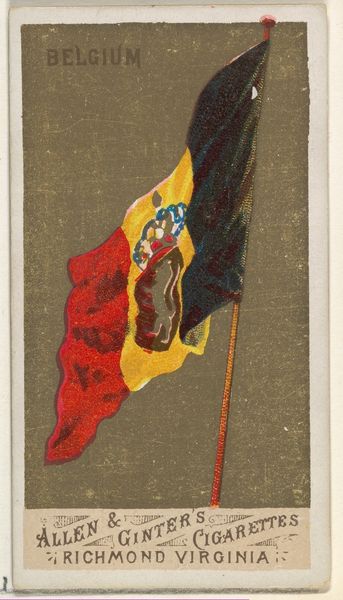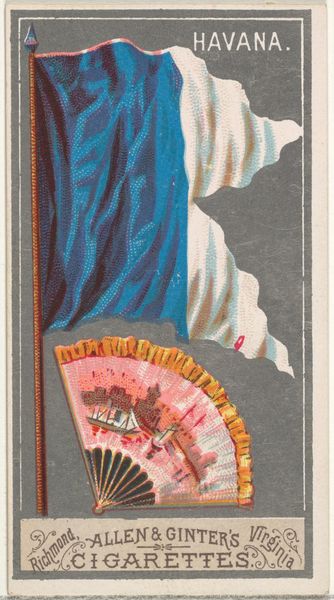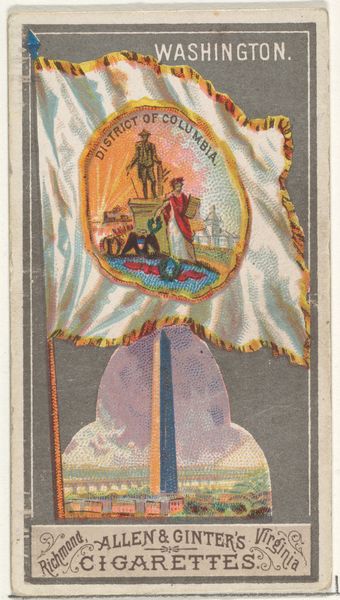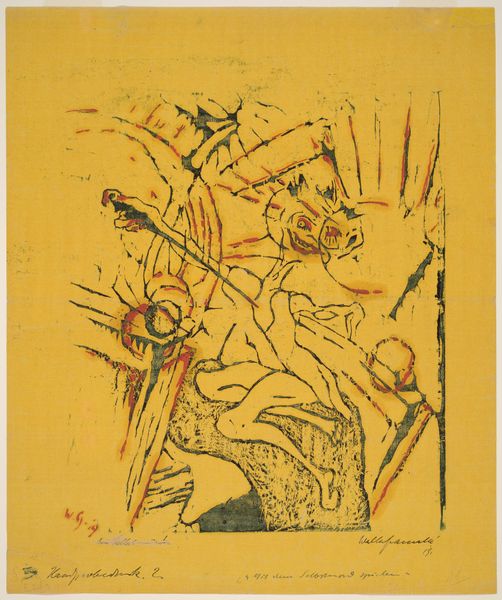
Egypt and Utah (double-printed card), from Flags of All Nations, Series 1 (N9) for Allen & Ginter Cigarettes Brands 1887
0:00
0:00
drawing, graphic-art, mixed-media, print, collotype, poster
#
drawing
#
graphic-art
#
mixed-media
#
ink paper printed
# print
#
collotype
#
poster
Dimensions: Sheet: 2 3/4 x 1 1/2 in. (7 x 3.8 cm)
Copyright: Public Domain
Editor: This small card, "Egypt and Utah" from 1887, is a mixed-media print produced for Allen & Ginter Cigarettes. What strikes me is the strange juxtaposition of these two places – and the fact that it was essentially advertising. What’s your take on this piece? Curator: Its function as a promotional item is central. Cigarette cards like these were mass-produced objects. This tells us about late 19th-century consumer culture and how companies used exotic imagery, combining 'Egypt' with 'Utah', to associate their brand with notions of both old-world mystique and new-world opportunity. Think about the printing techniques and distribution network required for such wide circulation. Editor: So you're less interested in any symbolic meaning and more in the means of production and how it circulated? Curator: Precisely. Consider the labor involved, the types of ink used, the paper itself - likely cheap and readily available. This wasn't fine art meant for a museum, but ephemera intended for fleeting consumption alongside tobacco. Also, how does the visual hierarchy affect consumption; do viewers linger over Utah or Egypt? Editor: That’s a great point; the layering of places definitely complicates its cultural statement. Curator: And think about the implied viewer. Who was the target demographic, and what assumptions did Allen & Ginter make about their knowledge or perceptions of "Egypt" and "Utah"? The commercial transaction of acquiring cigarettes becomes intertwined with notions of geographical fantasy. Editor: So the card becomes a tool for understanding consumption and cultural perception. I initially thought of it as an oddity, but seeing it as a piece of commodity culture shifts my perspective completely.
Comments
No comments
Be the first to comment and join the conversation on the ultimate creative platform.
